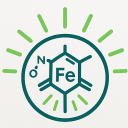
化学の力を使って生命現象を解明する、あるいは制御する。こうした学問領域はChemical Biologyと呼ばれ、近年盛んになってきています。永澤研究室では、低酸素、レドックス活性金属、細胞膜挙動の解明研究を中心に、そのケミカルツールの開発と新たな生命現象解明研究を展開しています。
Chemical Biology is an emerging scientific field to understand and control biological events by “Chemical Tools”. We’re now exploring novel and unique chemical tools to study hypoxia, redox-active metal ions, and plasma membrane.
1.低酸素部位を検出する近赤外蛍光プローブ分子の開発
NIR-fluorescent probes for visualizing hypoxic domain
体内における低酸素領域は固形がん微小環境の特徴の1つであり、この領域における腫瘍細胞は化学療法および放射線療法において抵抗性を示す。こうした悪性度の髙い腫瘍部位を検出することは、がんの診断のみならずその発生機構研究においても非常に有用である。我々の研究室ではこうした体内における低酸素領域を特異的に検出可能な近赤外蛍光プローブ分子およびMRI造影剤の開発を行なっています。
The hypoxic status of various solid tumors has been considered to be an indicator of adverse prognosis. Thus, non-invasive detection method of tumor hypoxia should be useful not only for assessment of the aggressiveness of the tumor but also for revealing carcinogenesis mechanisms. Our lab are creating new in vivo imaging tools including NIR fluorescent probes and MRI contrast agents and apply them to discover and study the hypoxia.
—Refs—
Bioconjugate Chemistry, 2012, 23, 324-329
Chemical Pharmaceutical Bulletin, 2012, 60, 402-407
2.細胞内の鉄イオンを検出可能なプローブ分子の開発
Development of probes for ferrous ion in live cells and live animals
鉄は体内で最も多く存在している遷移金属であり、その役割は酸素運搬や代謝酵素の活性中心など、生命維持に不可欠である。一方でその強い酸化還元活性は細胞にとって有毒でもあり、過剰に存在すると細胞死を引き起こす。実際に過剰鉄による発がんが報告されている他にも、神経変性疾患でも鉄の沈着が見られるなど、生体内鉄ホメオスタシスとの関連も深い。我々はこうした生体内鉄、特に活性酸素種の発生に強く関与する鉄(II)イオンの検出プローブを開発するとともに、各種疾病における鉄(II)イオンの機能解明研究を展開しています。
Iron is the most abundant transition metal ion in our body. Its biological roles are ranging from oxygen delivery, electron transport, and enzymatic reactions. However, excess Fe causes severe cell damage resulting in serious diseases such as cancer, ALS, Parkinson’s diseases, and hepatitis through abnormal production of reactive oxygen species. Therefore, iron plays important roles in healthy and diseased states of the living systems.
To study the mysterious pathological and physiological functions of iron, we are developing fluorescent probes for iron, especially Fe(II).
—Ref–
Chemical Sciences, 2013, 4, 1250-1256
Organic & Biomolecular Chemistry, 2014, 12, 6535-6746
Free Radical Research, 2014, 48, 990-995
3.細胞膜挙動の検出プローブ分子やそれを応用した細胞内送達デバイスの開発
Probes for study of cellular membrane dynamics and cell-penetrating devices
GPCRs細胞内モジュレーターであるpepducinの細胞内移行を視覚的に捕え、その重要な構造因子を明らかにするべく機能性分子の合成及び評価を行っている。それと同時に、pepducinを送達デバイスとして用いた新規細胞内送達システムの開発を目指している。
Pepducins are known as modulators of intracellular GPCRs. To visualize their internalization, we are developing their model compounds for studying the structural factors. We are currently studying a novel intracellular delivery system using the pepducins as a career.
